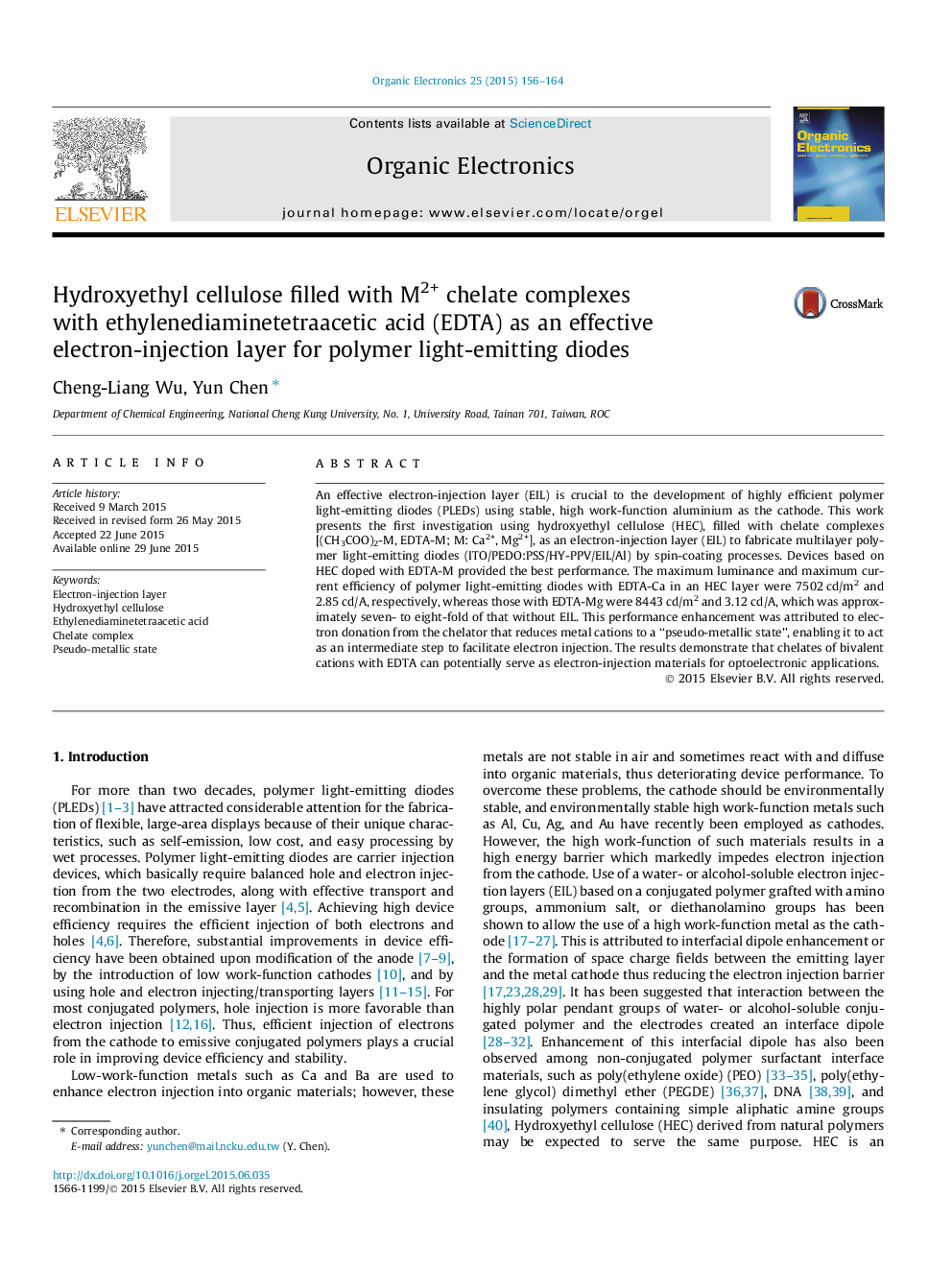| کد مقاله | کد نشریه | سال انتشار | مقاله انگلیسی | نسخه تمام متن |
|---|---|---|---|---|
| 1263635 | 1496832 | 2015 | 9 صفحه PDF | دانلود رایگان |

• HEC layer filled with EDTA-M chelate complexes was used as an effective EIL in PLEDs.
• The EIL leads to 7- to 8-fold enhancements of CEmax and Lmax in device performances.
• Pseudo-metallic state due to the chelator EDTA4- can facilitate electron injection.
• Chelating capability of EDTA plays an essential role in enhancing performances.
An effective electron-injection layer (EIL) is crucial to the development of highly efficient polymer light-emitting diodes (PLEDs) using stable, high work-function aluminium as the cathode. This work presents the first investigation using hydroxyethyl cellulose (HEC), filled with chelate complexes [(CH3COO)2-M, EDTA-M; M: Ca2+, Mg2+], as an electron-injection layer (EIL) to fabricate multilayer polymer light-emitting diodes (ITO/PEDO:PSS/HY-PPV/EIL/Al) by spin-coating processes. Devices based on HEC doped with EDTA-M provided the best performance. The maximum luminance and maximum current efficiency of polymer light-emitting diodes with EDTA-Ca in an HEC layer were 7502 cd/m2 and 2.85 cd/A, respectively, whereas those with EDTA-Mg were 8443 cd/m2 and 3.12 cd/A, which was approximately seven- to eight-fold of that without EIL. This performance enhancement was attributed to electron donation from the chelator that reduces metal cations to a “pseudo-metallic state”, enabling it to act as an intermediate step to facilitate electron injection. The results demonstrate that chelates of bivalent cations with EDTA can potentially serve as electron-injection materials for optoelectronic applications.
We report an effective electron-injection layer in PLEDs based on hydroxyethyl cellulose composited with EDTA-M chelate complexes to result in approximately seven- to eight-fold enhancements of maximum luminance and maximum current efficiency.Figure optionsDownload as PowerPoint slide
Journal: Organic Electronics - Volume 25, October 2015, Pages 156–164